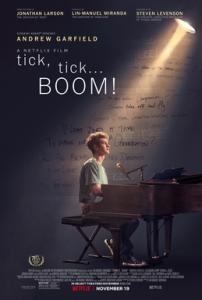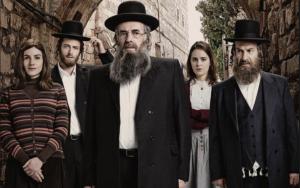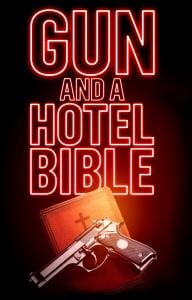
Kate Winslet is Britain’s Meryl Streep. She is an actress who can play any role, inhabit any persona, and convince us.
In The Reader,directed by Stephen Daldry (Billy Elliott) and based on the novel by Bernhard Schlink, Kate is Hanna, a seemingly ordinary woman in 1950’s Germany who helps a 16 year-old boy get home when he falls ill. His name is Michael (played by David Kross as a teen and later by Ralph Fiennes as an adult.) When Michael returns to thank Hanna, she seduces him and he lets himself be seduced. They embark on a summer of love – but is it really love?
Hanna is a ticket-puncher on a trolly. She goes to work and comes home. As Hanna and Michael become more involved he tries to find out more about her. He tells her stories he is reading about in school and then she asks him to read them to her. She seems more interested in books and stories than she does in sex.
Then it is all over; Michael finds Hanna’s flat empty one day. The film picks up years later. Michael is a law student who attends the trial of six women accused of a war crime.

-spoiler-
In order to write about this film or enter into discourse about it, it is necessary to reveal the plot.
Contemporary Germans still deal with guilt over their forefathers’ and mothers’ cooperation or collaboration with the atrocities of the Third Reich. In The Reader, the author (I suppose; I didn’t read the book) and filmmakers use parallel construction to show the audience how one person succumbed to the Nazi’s – leading to her own ruination and how her subsequent “affair” with an innocent young man twenty years later almost ruined the life of a person in the next generation.
Hanna was an illiterate young woman who worked for the Siemens Corporation (still in existence; noted for its support of Nazi Germany – but this is not the focus of The Reader.) She learns the Nazi’s are looking for prison guards so she inexplicably quits her job and signs up. Later, she and five other female guards are assigned to guard 300 women as they flee before the allied advance. The guards lock the women in a church, and a fire breaks out. The guards refuse to open the doors, because, as Hanna explains at trial, as if it was the most obvious answer in the world, that if they had unlocked the doors, chaos would have ensued; they would have lost control and they couldn’t have that, could they? They chose “order” , maintaining the status quo (never questioning it), over saving human lives.
Hanna takes all the blame – the other guards blame her anyway (one knits her way through the trial as if it is a momentary inconvenience that will soon be resolved.) A note had been left that convicts the women but Michael wants to tell the court that it could not have been Hanna who wrote it because she was illiterate. Hanna is too proud to admit her inability to read and write. She is sentenced to 20 years in prison; the other women get much shorter sentences.
Michael marries and has a daughter. His marriage fails; he and his daughter are not close. The ghost of Hanna, his obsession with her, ruins his ability to have authentic relationships. He begins to record books on tape and sends them to Hanna in prison. She teaches herself to read. She is a model prisoner. When it is time for her release, the prison authorities ask him, the only person who has been in touch with her, to help. At first Michael does not respond. But then he finds her a job and a flat. He goes to see her.
He asks her, thinking of the trial, of what she had been part of, “What have you learned?” Hanna looks at him like he is crazy and burst out impatiently, “Learned? Learned what? I learned how to read!” She has no feelings or remorse for what she had done, been part of. But she is desperately unhappy and kills herself just before release. It is as if there is no connection between “duty” (just doing my job) and “conscience”.
The Reader is a difficult film, however. Hanna commits statutory rape and the sex scenes between Hanna and Michael are shockingly graphic. This is a very risky thing for a filmmaker to do (Ang Lee used the same technique – if you would call it that – in Lust/Caution about the Japanese invasion and occupation of China in World War II). Such graphic scenes can block access to the important themes because we are so trained to judge the meaning of films by content rather than context. I understand what the filmmaker wanted to do, but filmmakers should trust the audience more – remember gestalt? We can “understand” what is going on without having every detail and action displayed and demonstrated.
This is the parallel, however. The Nazi regime could be said to have seduced ordinary Germans, turned their atrocities into ordinary jobs and activities, all for the sake of order and precision. The Germans, who were mostly “innocent” as young Michael was in the next generation, for the most part let the Nazi’s control their consciences. What Hanna did to Michael through illicit, immoral and unethical sex is what the Nazi’s did to the German people by their lies, promises, and persuasion. Michael and the people capitulated.
Would there be any redemption?
After Hanna’s death, Michael buries her in the cemetery attached to a church they had visited during that summer. Michael takes his daughter there, beginning to explain and rebuilding his relationship with the next generation. Michael shows it is possible to heal and move on, but only if can look inside, reflect, and learn.
Hanna also leaves a will and the money she has earned working in prison. She asks Michael to give it to the young woman (now older) who was a child in the church and testified against her at trial. It is clear that money will not make up for anything. The woman refuses it. But she takes the tea tin in which Hanna kept the money. The woman explains that she had had a tin like that once that she loved, but the guards had taken it from her in the camps. The tea tin had more value as a symbol than money.
What did the world learn from the Holocaust and Nazi atrocities? What have I learned and how can this make me a better person, neighbor, and citizen today?
What was the role of religion in the Third Reich and the people then and now? This is a subtext that creeps through the narrative – and a question still to be answered.
The Reader is not a film for everyone because the sex will offend. However, what the Nazi’s did was so much worse, and there for all the world to see and no one would look even when witnesses begged them to do so. This is the burden, the mandate, that people of good will carry today: no more genocide. Yet Rwanda happened in the ’90’s, and the atrocities in Dafur continue – today, at this moment. What are we doing? (Have you written to your senators? I have, twice.) What is happening to the Palestinians today? And to people in other parts of the world that our media do not tell us about?
Cinema externalizes internal realities. The explicit sex made me very uncomfortable but that is the whole idea.
What have we learned?
And what are we doing about it?












